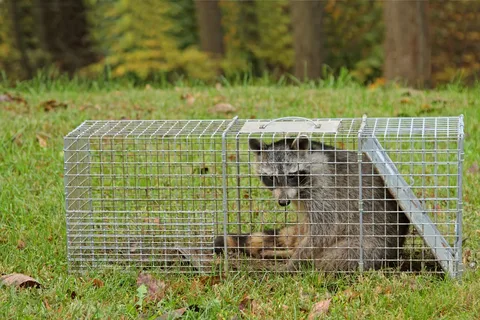Wild animals can cause severe complications for farmers and local communities. They can harm crops, attack farm animals, and spread diseases. Wildlife like deer, raccoons, and birds frequently eat crops, which means farmers get a reduced amount of food and make less money. Wildlife can upset livestock, leading to hurts or deaths that make farming tougher. And more, wild animals can bring diseases that equally disturb crops and wildlife, putting your food safety in danger. To fix these problems, it’s essential to manage wildlife well. This displays why Ohio wildlife control is required to aid in protecting farms and keeping agriculture healthy.
Types of Agricultural Losses Due to Uncontrolled Wildlife:
Crop Damage: Wildlife can eat or destroy crops, causing large money losses for farmers.
Livestock Losses: Predators can attack farm wildlife, leading to fewer animals and financial complications for farmers.
Infrastructure and Property Damage: Wildlife can break down barriers and other gear, making repairs more costly for farmers.
Spread of Diseases: Animals can bring diseases that upset livestock and crops, causing health complications on farms.
Soil Degradation and Erosion: Uncontrolled wildlife can harm the soil, causing loss that makes the land less lush and not as productive.
Crop Damage:
Wildlife, particularly plant-eating animals like deer, rabbits, wild boars, and birds, can really damage crops. They eat fresh plants, mature crops, and fruits, which decreases how much farmers can harvest. Some wildlife, like wild boars, dig up the ground and eat seeds and plants. Birds, such as crows and starlings, frequently eat ripe fruits and grains, causing big losses to crops. Farmers who depend on seasonal harvests are hit the toughest, as even small animal visits can lead to great losses.
Livestock Losses:
Predators like wolves, coyotes, foxes, and large cats can be a huge danger to farm animals, disturbing farmers and landowners. When these predators are not controlled, they can attack wildlife like cows, sheep, goats, and chickens. Losing livestock can charge farmers a lot of money, frequently thousands of dollars. For minor farms, these harms can be very tough to get better from. Moreover, farmers have to pay for veterinary care for wounded animals and for setting fences to have livestock harmless, which adds to their financial challenges. For this, managing predators is very key for farmers with livestock.
Infrastructure and Property Damage:
Wildlife can really damage farming structures, upsetting farmers a lot. Large wildlife like deer and wild boars can break barriers, making it stress-free for more animals to enter and cause hurt. Birds and rodents frequently create nests in outbuildings and storage sheds, leaving mucks and grinding through bags of grains. Beavers are also a problem; they build dams that can block drains, bring about floods in fields, and destroy crops and soil. Setting broken structures can be very pricey, and the additional loss can lead to more water use, putting more burden on resources.
Spread of Diseases:
Wild animals can frequently spread diseases that disturb livestock, crops, and even people. For instance, rodents can bring diseases like leptospirosis, Hantavirus, and salmonella, which can infect wildlife and people through interaction with their leftovers. Wild animals can also have parasites and other diseases that can rapidly spread between farm animals, spoiling their health and productivity. Deer can bring Lyme disease, which is passed to people by ticks that live on deer. Other diseases from animals, like avian influenza and rabies, can also threaten farms and public health.
Soil Degradation and Erosion:
Wild animals that dig and tunnel, like rodents, birds, and wild boars, can damage soil and lessen its quality. When they dig, they make holes and tunnels, which make the land rough and tough to manage for farming. This digging, too, leads to more corrosion, meaning the soil washes or blows away, and taking nutrients with it. In the end, crops don’t grow as well, and farmers get reduced harvests. Keeping these animals in check is key to shielding the soil and making certain farming can carry on effectively for the future.
Conclusion:
To sum up, uncontrolled wildlife can cause severe complications for farmers by harming crops, hurting livestock, spreading diseases, and ending farm structures. These problems can cost farmers a lot of money and make it tougher to grow adequate food. If wildlife is not managed correctly, it can harm the atmosphere, creating farming even more challenging. Simple wildlife control approaches like fencing, handling predators, and changing surroundings can aid farmers in protecting their farms.

